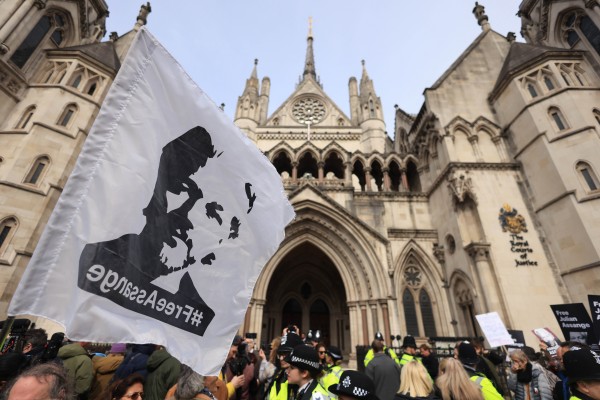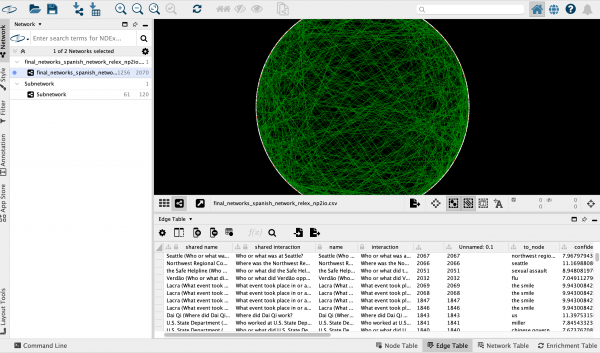Assuming the sworn witness was telling the truth, those responsible for the killing of Guyanese journalist Ronald Waddell must have thought the game was finally up.
It was July 2009, nearly four years after Waddell’s death. The scene: a New York City courtroom, where a well-known lawyer was on trial for tampering with witnesses to help his Guyanese client, suspected drug lord Roger Khan. But when a former Khan associate turned U.S.-government associate was called to the stand, he revealed much more than attorney misconduct: it was Khan, he said, who had ordered the hit on Waddell.
At the time, Khan was also on trial in New York on drug-trafficking charges. The witness disclosed plenty of other names, including former members of the Caribbean country’s police force. He even alleged that Khan had placed a phone call to a government minister after the deed was done. Explosive revelations, as one Guyanese newspaper put it.
But in the end, the testimony would have little effect. The sobering fact remains: Four years after that trial, and now nearly eight years after Waddell’s death, no one has faced justice for the slaying.
Ahead of International Day to End Impunity, Julia Johnson, founder of Guyana’s Prime News and then-president of the Guyanese Press Association, and Bert Wilkinson, the Associated Press Guyana correspondent, jointly responded in writing to IPI’s questions about Waddell’s life and death, the New York courtroom drama, and how impunity for his murder has affected the country’s press.
IPI: Can you tell us a little bit about Ronald Waddell? Who was he and what were the circumstances surrounding his killing?
JJ/BW: Ronald Waddell was a mainstream journalist with the state-owned Guyana Chronicle in the early 1980s. He migrated to the U.S. thereafter and on his return in the early 90s switched to the privately owned mainstream Stabroek News newspaper before starting a daily television talk show. He appealed to the young and unemployed, mostly Afro-centric section of the population in the Guyana. His daily show dealt with attempts at empowering young people.
It was around this time that he also began to chronicle the extrajudicial killings of about 400 young people by way of a death squad. Then-National Security Minister Ronald Gajraj had said the squad was necessary to fight gang violence because regular police officers were running scared as more than two dozen of them had been killed in shootouts.
Many of the 400 hundred are [only] presumed dead as their remains have not been found and their whereabouts remain unknown. The relatives of the dead and the missing have recounted that the last time they saw them was when persons dressed in police uniform collected them from their homes.
Waddell literally made it a crusade to highlight such incidences, which he labelled a government-sponsored genocide of the country’s youths. (While the majority of the dead and the missing were Afro-Guyanese, there were others of other ethnic origin.) His last appeal before he died in a hail of bullets on Jan. 30, 2006, was for the Afro-centric population to spend their limited resources at outlets that support their development and that of their communities. (This occurred as many of the Afro-centric communities had begun to speak out about infrastructure works that were being executed in other ethnic enclaves, mostly Indo Guyanese but bypassed theirs.)
IPI: What do we know about what happened on Jan. 30, 2006?
JJ/BW: Not much has been had in terms of an investigation into Waddell’s death from the local law enforcement agencies. Waddell was headed to his seaside home when he got out of his car to open his gate. Gunmen whom we later learnt were alerted to his return arrived on the scene and opened fire on him. It was determined that at least three AK47 were used in the attack. To date no inquest into his death has been held.
IPI: What was the initial reaction, by the police and by the government, to Mr. Waddell’s murder?
JJ/BW: The police were overwhelmed as [Waddell’s killing occurred] during the crime spree that had started in 2002. We later learnt that at the time there were two killing squads operating with impunity. One was headed and controlled by a former security minister, Ronald Gajraj, who is now Guyana’s diplomatic representative in India, and the other, called the phantom gang, was organised and established by now convicted drug dealer and arms dealer Shaheed Roger Khan. Khan is currently sitting in a U.S. prison on an international drug trafficking conviction.
Khan had publicly boasted of assisting the government in fighting crime and had in his gang both serving and former policemen. The government has never denied this. Then-President Bharrat Jagdeo called Waddell’s death “unfortunate”.
Not much came of the investigation Waddell’s death. A few known characters were held but were let go after a few days. One man, whom the police had picked up as the driver to the gang that shot Waddell, was found dead on the outskirts of the city one day after he was released by the police.
IPI: As time went on, did police give any signs of progress, for example, by announcing the existence of potential suspects or leads?
JJ/BW: Despite the media’s best efforts to keep the investigations alive, by seeking updates from the police and the politicians, we were told that all leads had petered out.
That is until Robert Simels – a U.S.-based lawyer for the now-convicted drug-and-arms dealer Shaheed Roger Khan – was charged, tried and jailed [in the U.S.] for witness tampering and obstructing justice when he attempted to silence witnesses against his drug lord client.
Khan had made a plea deal with the U.S. and, thus, no evidence was availed from him directly. [But] an informer and self-confessed member of the Khan gang, one Selwyn Vaughn, became a witness for the US prosecution in the Simels case. He told US judge John Gleeson on July 28, 2009, that he had been the look-out on the seawall opposite Waddell’s residence and informed Khan that Waddell had just arrived home and was still in his car at the gate.
He said, too, he remained on the seawall when the vehicle with the other members of Khan’s gang , known as the ”phantom squad”, arrived and shot Waddell. Vaughn was not held by the police in Guyana in 2006 as they investigated Waddell’s death.
Vaughn also told the U.S. court that after the killing he, along with the killers and Khan, went to a Georgetown night club to celebrate. It was there that he said he overheard Khan phone then-Health Minister Leslie Ramsammy to instruct him to let Waddell die. (This is all information that emanated from Simels’s trial). Simels was convicted in December of 2009 and is currently serving a 14-year sentence. Vaughn in currently in the U.S. witness protection programme.
IPI: What kind of efforts did you and others in the journalist community in Guyana make to encourage progress in securing justice for Mr. Waddell? How did the authorities respond to these efforts?
JJ/BW: As a media fraternity, we kept asking whether the revelations in the U.S. court could used to bring charges against those Vaughn named (three were former police officers living in Georgetown). The police said that was not possible and that Vaughn would have to swear to that information in a local court. The then-government had labelled Waddell an enemy of the state and had even charged him with sedition in May of 2001 but those charges were dismissed the next year at the preliminary inquiry.
IPI: How would you describe the experience of trying to combat impunity in this case?
JJ/BW: This was seeking to have the state investigate itself. And based on Khan’s public and now infamous statement, the government was complicit in Waddell’s death and did not actively pursue an investigation into his death to bring those responsible to justice.
IPI: What kind of effect, if any, would you say that the case has had on journalism in Guyana?
JJ/BW: The effects on journalism are still being felt now. Journalists do not normally encourage the use of bylines for their investigative pieces. In fact, such pieces are shared with other media houses to be published simultaneously, on television and in the newspapers. Scoops and exclusive reports, when these were to be had, are usually shared with other houses to insulate the reporter who did the grunge work. It was difficult to have reporters pursue reports on drug and drug running, drug dealers and even to go after many of the killings and or disappearances.


